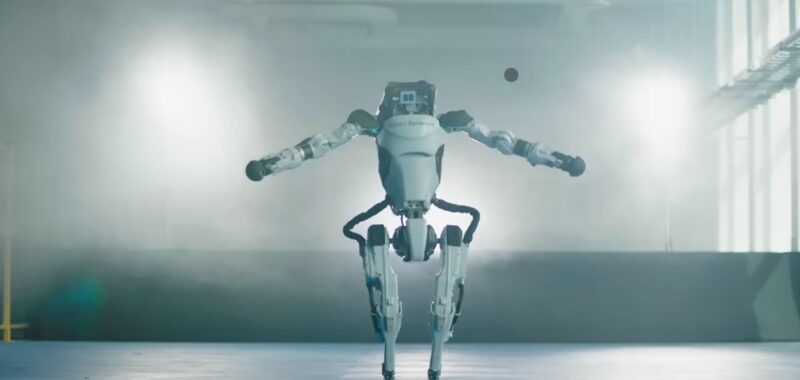Atlas, the hulking 330-pound acrobatic Boston Dynamics robot (that filled us with equal parts awe and horror) is officially going into retirement. The 11-year-old iconic bi-pedal giant will be replaced by a much lighter, all electric successor. The transition marks an end of an era for Boston Dynamics as consumer and investor interest turns increasingly toward smaller, scalable humanoid robots capable of performing manufacturing tasks.
Boston Dynamics commemorated the original “hydraulic Atlas,” with a farwell video this week. The video shows Atlas sprinting through an obstacle course before clumsily crashing to the ground. What follows is a collection of some of Atlas’ greatest hits over its 11-year-lifespan. Video clips show the robot evolving over the years from a rigid, slow hunk of metal to a powerful robotic athlete capable of performing backflips and hurling large objects with seemingly superhuman strengths. Of course, the video also shows Boston Dynamics engineers mercilessly showing, attacking, and tripping Atlas throughout the years to test its capabilities.

Atlas was originally produced in 2013 for the Pentagon’s Defense Advanced Research Agency. At the time, DARPA hearladed Atlas as “one of the most advanced humanoid robots ever built.” The impressive and often imposing machine went viral on the internet with a collection of eye-grabbing videos showing it engaging in everything from wild acrobatics and synchronized dance routines to over-the-top construction site work.


Boston Dynamics pivots to lighter, more commercial humanoid robots
In a surprise announcement Wednesday, Boston Dynamics revealed Atlas’ name will actually live on, though in a much different form factor. The company released a brief video showing off what looks like a match for a smaller, bipedal robot with a circular head lying on a test room floor.

In a blog post, the company described this new successor as a “fully electric Atlas robot designed for real-world applications.” The company says the new Atlas will have a broader range of motion than its predecessor. Hyundai, which acquired Boston Dynamics in 2021, will begin testing the new Atlas in its factories in the coming months, according to the blog post.
Long-term commercialization and scalability appear to have been primary factors driving the old Atlas’ into retirement. Since the Hyundai question, Boston Dynamics has pushed to widely sell other, more affordable products like its “Spot” quadruped and its “Stretch” warehouse robot. The old Atlas, by contrast, was never sold commercially and may have simply cost too much for any manufacturer to justify buying it. Boston Dynamics hinted towards its commercial plans for the new Atlas in its most recent press release.
“Given our track record of successful commercialization, we are confident in our plan to not just create an impressive R&D project, but to deliver a valuable solution,” the company said.
Despite being primarily an R&D tool, the original Atlas still played an important symbolic role, acting as a technical ceiling for what other bipedal robots could achieve. Its prominence helped usher in a new wave of human-like robots from startups like Figure and Agility Robotics, which are looking to combine robotics with large language models to make them more useful at completing tasks in the real world. Ironically, it’s looking like the new Atlas will now compete against the upstarts its predecessor inspired.
[ Related: OpenAI wants to make a walking, talking humanoid robot smarter ]

